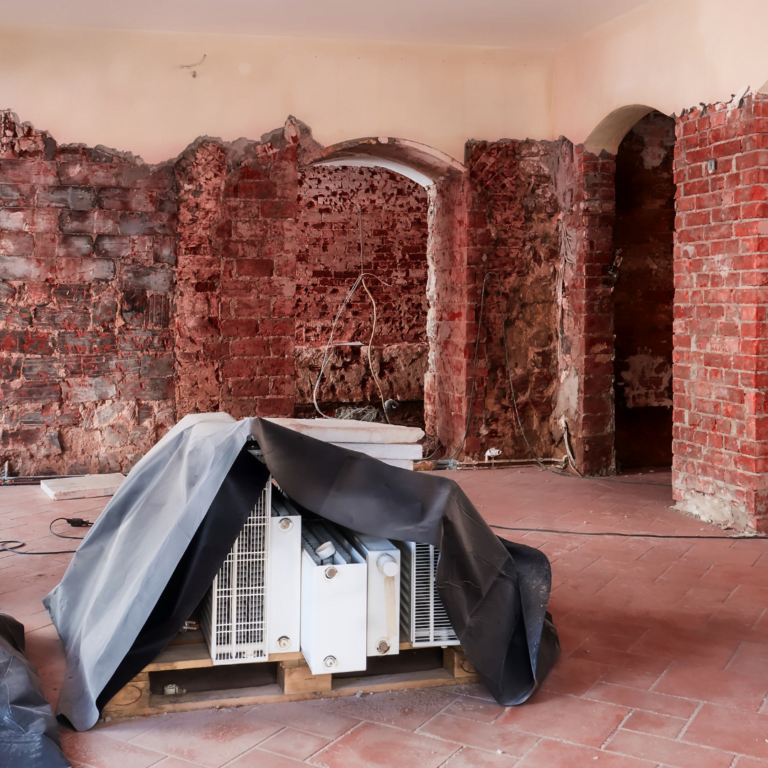Preserving America’s Architectural Heritage: Restoring Historic Gems.
In today’s fast-paced world, it’s easy to overlook the beauty and historical significance of the buildings that surround us. However, these architectural gems are more than just structures; they are windows into our past, serving as tangible links to our cultural heritage. That’s where the expertise of Lone Star Restoration comes into play. As a leader in the field of historic preservation, Lone Star Restoration is dedicated to breathing new life into these treasures, ensuring that America’s architectural heritage is preserved for generations to come.
The Significance of Historic Preservation
Historic buildings are not merely bricks and mortar; they are repositories of stories, memories, and traditions. They provide a sense of continuity, connecting us to those who came before us. Moreover, these structures often embody exceptional architectural craftsmanship and design, representing different periods and styles. By preserving these buildings, we can learn from the past and celebrate our shared heritage.
The Restoration Process
Restoring historic buildings requires a meticulous and well-orchestrated process. It begins with a thorough assessment of the building’s condition, including an examination of the materials used, architectural details, and any existing damage or deterioration. This assessment serves as a foundation for the restoration plan.
Extensive research is conducted to understand the building’s historical context, original design intent, and construction techniques. By studying archival documents, photographs, and blueprints, restoration experts gain valuable insights that guide their efforts.
Once the research phase is complete, skilled craftsmen and restoration specialists meticulously carry out the restoration work. This may involve repairing or recreating architectural elements, addressing structural issues, and restoring decorative features to their former glory. The goal is to strike a delicate balance between preserving the building’s authenticity and ensuring its functional use in the present day.
Meticulous Craftsmanship and Techniques
Restoring historic buildings requires a deep understanding of traditional craftsmanship and specialized techniques. Skilled artisans are trained in traditional trades such as masonry, carpentry, plasterwork, and stained glass restoration. They employ age-old methods to recreate intricate details and match materials, ensuring that the restored elements seamlessly blend with the original design.
In addition to traditional craftsmanship, modern technologies and innovative approaches are employed to enhance the restoration process. Laser scanning and 3D modeling allow for accurate documentation of the building’s existing condition, aiding in the identification of structural issues and assisting in the recreation of missing elements. Advanced materials and conservation treatments are used to protect and extend the lifespan of the restored structures.
Case Studies: Iconic Buildings Restored by Lone Star Restoration
To illustrate the transformative power of historic restoration, let’s explore a few notable examples of buildings that have been successfully restored by Lone Star Restoration:
1. The Jefferson Mansion: Located in the heart of a historic district, the Jefferson Mansion is a magnificent example of Greek Revival architecture. Over the years, weathering and neglect had taken their toll on this iconic structure. However, through meticulous restoration efforts, Lone Star Restoration revived the mansion’s grandeur, meticulously recreating the ornate columns, restoring the original windows, and bringing back the vibrancy of its historic color palette.
2. The Harper Theater: Once a popular entertainment venue in a bustling neighborhood, the Harper Theater had fallen into disrepair and was on the verge of demolition. Lone Star Restoration stepped in, carefully preserving the theater’s Art Deco facade while renovating the interior to accommodate modern cinema technology. Today, the Harper Theater stands as a shining example of how historic buildings can be repurposed to meet the needs of the present without sacrificing their architectural character.
3. The Roosevelt Hotel: A landmark in a bustling city, the Roosevelt Hotel had witnessed decades of glamour and history. However, time had taken its toll, and the building required extensive restoration. Lone Star Restoration meticulously restored the hotel’s iconic neon signage, refurbished the grand lobby to its original splendor, and transformed the guest rooms to offer modern comfort while preserving the charm of the past.
Through these case studies, we witness the transformative power of restoration and the commitment of Lone Star Restoration to preserving America’s architectural heritage.
The Role of Community Engagement
Preserving historic buildings goes beyond the physical restoration process; it requires the active engagement and support of local communities. Lone Star Restoration recognizes that community involvement is crucial for the long-term preservation and appreciation of architectural heritage. They actively collaborate with local residents, historical societies, preservation organizations, and government entities to ensure that restoration projects align with community values and priorities.
One of the key aspects of community engagement is raising awareness about the importance of preserving historic buildings. Lone Star Restoration organizes educational programs, workshops, and public lectures to enlighten community members about the cultural and economic benefits of architectural preservation. By sharing the stories and significance behind these buildings, they inspire a sense of pride and connection among community members.
Additionally, Lone Star Restoration encourages community participation in the restoration process itself. They involve local craftsmen, artisans, and contractors, providing them with opportunities to contribute their skills and expertise. This not only fosters a sense of ownership and pride but also ensures the transmission of traditional craftsmanship techniques from one generation to another.
Moreover, Lone Star Restoration actively seeks community input during the planning and decision-making stages of restoration projects. They conduct public meetings, gather feedback, and incorporate community suggestions whenever feasible. By involving the community in the decision-making process, they ensure that restoration efforts are respectful of local history, traditions, and architectural character.
Through their community engagement efforts, Lone Star Restoration fosters a sense of shared responsibility and stewardship. They empower communities to take an active role in preserving their architectural heritage, ultimately creating a stronger connection between people and the historic buildings that define their identity.
The Future of Historic Preservation
As the field of historic preservation continues to evolve, new challenges and opportunities arise. Lone Star Restoration remains at the forefront of these developments, constantly adapting and incorporating innovative approaches to ensure the continued preservation of America’s architectural heritage.
Sustainability is an increasingly important aspect of restoration projects. Lone Star Restoration actively seeks out environmentally friendly materials and practices, minimizing waste and energy consumption. They explore sustainable construction techniques, such as using recycled or locally sourced materials, implementing energy-efficient systems, and integrating renewable energy solutions. By embracing sustainable practices, they contribute to the long-term viability and resilience of restored historic buildings.
Adaptive reuse and revitalization have also become prominent strategies in historic preservation. Lone Star Restoration recognizes that repurposing historic structures for modern uses not only preserves their architectural character but also contributes to the economic and social vitality of communities. They collaborate with architects, urban planners, and developers to find creative ways to adapt historic buildings for new purposes while respecting their historical significance. This approach breathes new life into these structures, ensuring their relevance and sustainability in the face of changing societal needs.
Technological advancements play a crucial role in the future of historic preservation. Lone Star Restoration embraces cutting-edge technologies, such as 3D scanning, virtual reality, and augmented reality, to aid in documentation, analysis, and visualization of historic buildings. These tools allow for more accurate assessments, efficient planning, and enhanced public engagement. Lone Star Restoration remains committed to staying abreast of emerging technologies and integrating them into their restoration projects, ensuring that they continue to deliver high-quality results.
By combining sustainable practices, adaptive reuse strategies, and innovative technologies, Lone Star Restoration is well-positioned to navigate the future of historic preservation. They continue to be a leading force in safeguarding America’s architectural heritage, preserving the stories, character, and beauty of historic buildings for generations to come.
Conclusion
Restoring historic gems is not simply about preserving old buildings; it is about safeguarding our cultural identity, celebrating our shared history, and ensuring that future generations can experience the beauty and significance of these architectural treasures. Lone Star Restoration’s dedication to the art and science of restoration plays a vital role in preserving America’s architectural heritage. Through their expertise and passion, they breathe new life into historic buildings, rekindling their stories and allowing us to forge a deeper connection with our past. By valuing and investing in the preservation of these architectural gems, we pave the way for a future that cherishes and respects our rich heritage.





